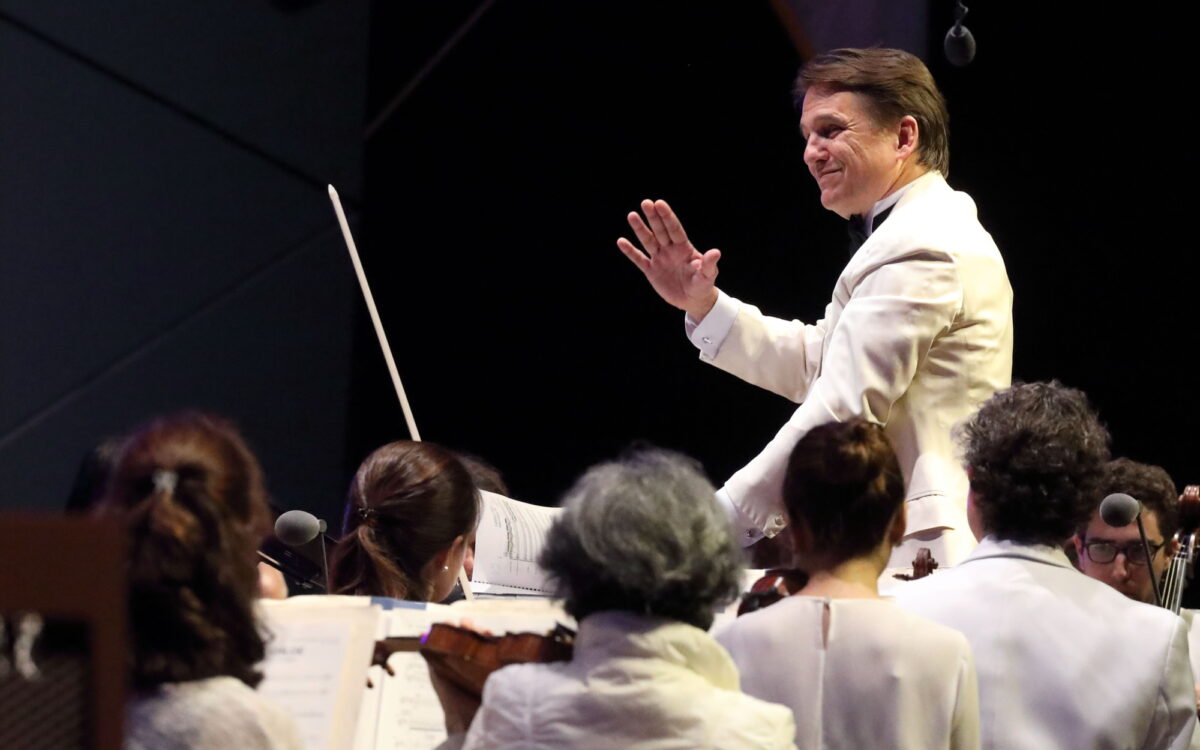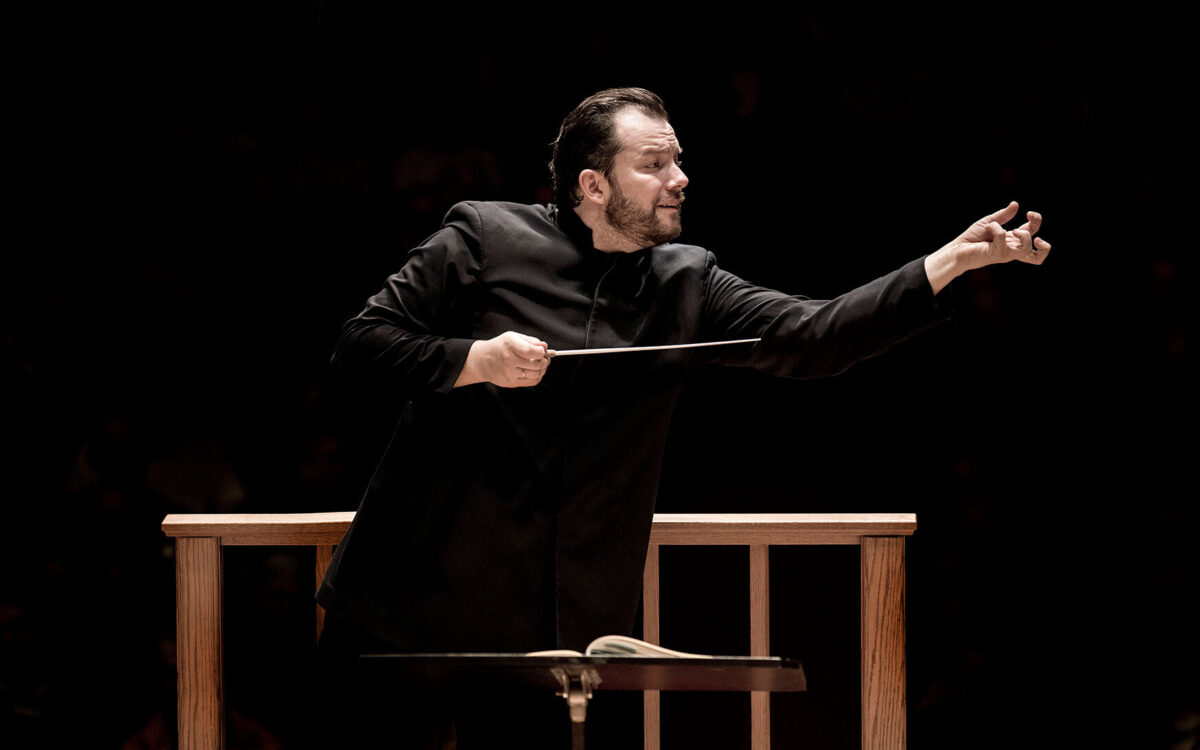Tango
Arturs Maskats was born in Valmiera, Latvia, on December 20, 1957, and lives in Riga, Latvia. He wrote Tango in 2002; it was premiered September 26 of that year in the Large Guild, Riga, Latvia, by the Latvian National Symphony Orchestra led by Normunds Vaicis. Andris Nelsons led the first Boston Symphony performance, which took place during the Tanglewood on Parade Gala concert on August 8 in the Koussevitzky Music Shed.
The score of Tango calls for piccolo, 2 flutes, 2 oboes, English horn, 3 clarinets (3rd doubling bass clarinet), 3 bassoons (3rd doubling contrabassoon), 4 horns, 3 trumpets in B-flat, 3 trombones, tuba, timpani, percussion (xylophone, glockenspiel, crotales, triangle, sleigh bells, cymbals, guiro (rasp), claves, maracas, wood blocks, log drum, bongos, jazz drum, snare drum, bass drum), harp, celesta, harpsichord, bandoneon, and strings (first and second violins, violas, cellos, and double basses). Duration is about 11 minutes.
“With all my being,” Arturs Maskats says, “I feel I am a theater (opera, ballet, drama, etc.) composer.” He has spent nearly his entire working life in the theater and has also composed film music. Immediately after finishing his studies, he became music director (1982-1997) of the Rainis Dailes Theater in Riga, where he composed incidental music for more than 100 dramatic productions. He was artistic director of Riga’s Latvian National Opera from 1996 to 2013, where he worked alongside the company’s music director, Andris Nelsons, for ten years. Nelsons had played trumpet in the opera orchestra beginning at age 19 and at 25 became the opera house’s chief conductor. Nelsons and Maskats had a shared mentor in Andrejs Žagars (1958-2019), general director of Latvian National Opera from 1996 to 2013.
Maskats’ talent for music was recognized already when he was about 4 years old. His parents enrolled him in music instruction and he later attended the Jāzeps Mediņš secondary music school in Riga, a preparatory step for continuing his training at the Jāzeps Vītols Latvian Academy of Music, the country’s national conservatory. There he studied composition with Valentins Utkins, graduating in 1982. One of his country’s most prominent musical figures, Maskats has won the prestigious Latvian Great Music Award four times, including for Tango in 2003. He has been active in music promotion within Latvia and was chairman of the executive board of the Latvian Composers Union.
Maskats’ full-length ballet Dangerous Liaisons, based on the novel by Pierre Choderlos de Laclos, was premiered to great acclaim in 2006 by the Latvian National Ballet in Riga. It was part of a tour to reintroduce the company to Russian audiences in Moscow later that same year, and in 2019 was given in a new production at the National Moravian- Silesian Theatre in Ostrava, Czech Republic. Maskats’ magnum opus to date is the full-length opera Valentina, on an original libretto by the Latvian poet Liāna Langa. A major work focused on historical events in Riga during World War II, Valentina was premiered at Latvian National Opera in December 2014 to correspond to celebrations at the end of Riga’s year as a European City of Culture.
Maskats’ catalog includes dozens of works with chorus, among them the substantial Concerto for Choir a cappella, based on Latvian folksong texts, and Stanze de Venecia, setting poems by Josef Brodsky, Rainer Maria Rilke, and others. His Dickinson setting Vasaras sapņi (“Summer Dreams”) for mezzo-soprano, solo violin, and string orchestra was premiered by Kremerata Baltica in September 2020. His purely instrumental music includes the Concerto Grosso for violin, cello, percussion, and strings, a cello concerto, a piano concerto, and his Capriccio for oboe, vibraphone, and strings. The orchestral work My River Runs to Thee… was commissioned by the Boston Symphony Orchestra and was premiered by the BSO under Andris Nelsons’ direction in November 2019. The piece takes its title from an Emily Dickinson poem and was inspired in part by a pilgrimage the composer made to Dickinson’s home in Amherst, Massachusetts.
Through his stage works, Maskats mastered an eclectic style necessary to express the key emotional content of a scene or episode. Melodies of folk-music simplicity interact with highly chromatic lines and sophisticated orchestration to create multilayered musical environments, and he also hints at, or dives right into, familiar, popular musical genres. The central goals in each work are “the message, the development of the dramatic structure, and the poetic atmosphere.” Of his Tango, the composer has said that he wanted to do for the tango what Maurice Ravel did for the waltz in La Valse in 1920. Ravel’s piece was as much a portrait of 19th-century Viennese material culture as it was of the Viennese waltz; similarly, Maskats’ tango, ranging from sweetly romantic to hotly passionate, touches on the nuanced nostalgia of that dance as it evolved from an Argentine dance craze more than a century ago through acceptance in mainstream popular music to Astor Piazzolla’s sophisticated, jazz- and classical-influenced “new tango.” Along with his assured and imaginative orchestration, Maskats employs tango’s characteristic instrument, the bandoneon, to tap directly into the dance’s rich history.
Robert Kirzinger
Composer and writer Robert Kirzinger is the BSO’s Director of Program Publications.


